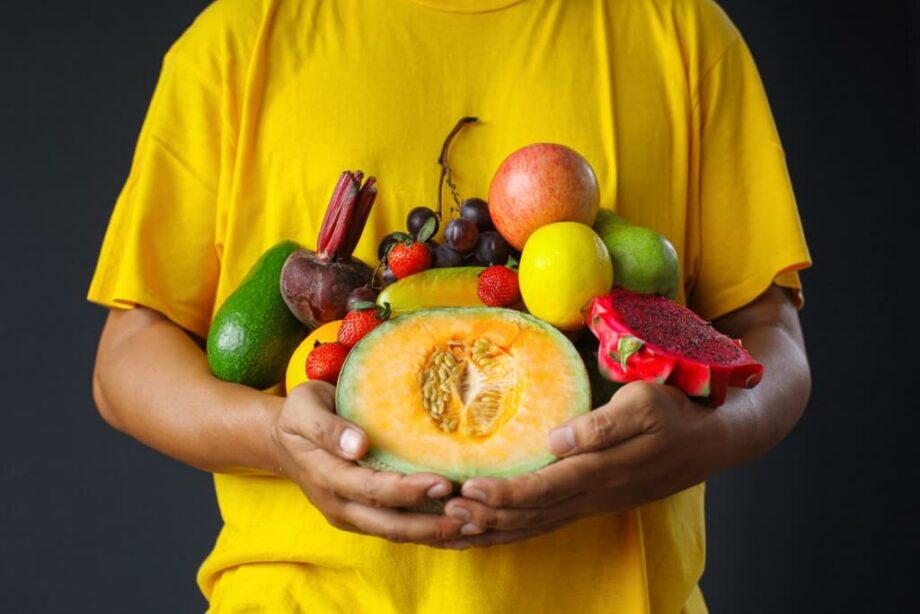If you are an active person who exercises frequently and intend to continue doing so during your quarantine, we will advise you on what meals you should continue to consume to maintain your current level of muscle mass.
If you want to build muscle mass and tone your physique, you must engage in regular physical activity as well as watch what you eat. During these gray days of confinement and waiting inside our homes, many people continue to exercise in small spaces with their own bodies, a yoga mat, weights, or an exercise bike.
What about the food? It is critical to consume adequate protein (up to 1.6 g of protein per kilogram of body weight), avoid low-calorie diets, avoid ultra-processed foods and junk food, and fuel the body in a healthy manner. Its connection to the musculature is irreplaceable. Carbohydrates, preferably with a complex structure or a slow release.
Make sure to eat plenty of foods that are high in protein, such as chicken, turkey, white fish, oily fish (like salmon), tuna, eggs, and tuna fish. Your muscles are built from amino acids, which are produced when your body breaks down protein into those building blocks. Whole grains, such as rice that takes a long time to cook or oats, are better for you than refined white grains because they include more fiber and vitamins than refined grains do.
In today’s article, we’ll go over some of the meals that will help you maintain or gain muscle mass…
- Foods to keep muscle mass during quarantine
- Proteins that are lean
- Carbohydrates that are beneficial
- Water
- Foods and beverages high in magnesium
Foods that will aid in the preservation of muscle mass while in quarantine
It is critical to remember that it is necessary to continue engaging in regular physical exercise and leading a healthy lifestyle, in addition to drinking plenty of water.
Proteins that are lean
Protein is essential for muscle gain because the amino acids found in protein, when combined with strength training exercises like weightlifting, allow your muscles to expand and tissues to heal themselves. It is advised to consume less red meat and more lean proteins such as fish, shellfish, chicken, lean meat, beans, lentils, eggs, and dairy products.
Vegans must combine a variety of resources, including lentils, walnuts, chickpeas, and whole grains, as well as soy-based products like tofu, tempeh, and edamame. Plant-based protein sources can be combined with dairy and eggs for vegetarians. Vegans will need to pool their resources.
Carbohydrates that are beneficial
Carbohydrates are one of the three primary macronutrients; however, many diets that have negative side effects, such as the ketogenic diet and the paleo diet, severely restrict or eliminate carbohydrates. Your body, on the other hand, requires carbohydrates. Carbohydrates can be obtained from fruits, vegetables, green leafy vegetables, tubers like sweet potatoes and sweet potatoes, and whole grains like quinoa and brown rice. These foods have a high fiber content and take a long time to digest.
Water
Muscles require the appropriate amount of water to maintain their optimal function and stay hydrated. Drinking enough water before, during, and after exercise is especially important; however, the amount of water that an individual needs to drink varies depending on their size, height, weight, physical build, age, and activity level. The standard recommendation is to drink eight glasses of water per day, but it is also recommended to eat a lot of fresh, unprocessed fruits and vegetables, which have a lot of water in them.
Foods and beverages high in magnesium
Magnesium is the fourth most abundant mineral in the body and is required for proper muscular and cardiovascular function. Magnesium supports normal blood pressure and rhythm by assisting in muscle contraction, including that of the heart. Magnesium is the body’s fourth most abundant mineral. Magnesium-rich foods include whole grains, green leafy vegetables, almonds, cashews, pumpkin seeds, tofu, avocado, beans, salmon, cod, or mackerel.
Use your muscles
You don’t have to give up working out completely if you have a consistent schedule at the gym where you work out. A useful daily habit at home can be accomplished in as little as thirty minutes. Stretch for ten minutes first thing in the morning. Take a stroll for ten minutes during your lunch break. After dinner, do some mild weight lifting or stretching with a stretch band for ten minutes.
According to the National Institutes of Health, the amount you need varies depending on your age and gender. For example, infants aged 7 to 12 months require 75 milligrams of magnesium per day, whereas the amount recommended for children and teens is significantly higher. According to the National Institutes of Health (NIH), the daily magnesium intake for men should be between 400 and 420 milligrams, while the daily magnesium intake for women should be between 310 and 320 milligrams.

